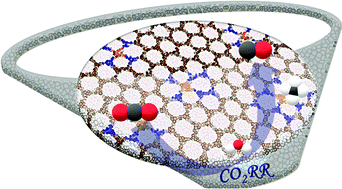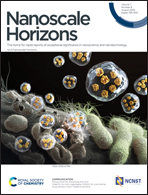Single atomic Fe–N4 active sites and neighboring graphitic nitrogen for efficient and stable electrochemical CO2 reduction†
Abstract
Single atomic Fe–Nx moieties have shown great performance in CO2-to-CO conversion. However, understanding the structural descriptors that determine the activity of Fe–Nx remains vague, and promising strategies to enhance their catalytic activity are still not clear. Herein, we used a high-temperature pyrolysis strategy and post-synthesis acid treatment for the direct growth of a single Fe–Nx site adjacent to graphitic nitrogen for the electrochemical CO2 reduction reaction. This strategy could significantly reduce the amount of pyridinic and pyrrolic N atoms, while graphitic N surrounding the Fe–Nx site predominantly increases. An experimental study combined with density functional theory revealed that the increase in the neighboring graphitic N decreases the number of electrons transferred between CO and the catalyst for FeN4-2N-3 and FeN4-4N-3, which results in the decrease of the adsorption strength of CO and the energy barrier for desorbing CO*. The as-synthesized Fe–Nx neighbored by graphitic nitrogen exhibited maximum faradaic efficiency of 91% at a lower overpotential of 390 mV. Due to the increase in the graphitic N, the catalysts perform efficiently for 35 h without any drop in current density.

- This article is part of the themed collections: Nanoscale Horizons 10th anniversary regional spotlight collection: Africa and the Middle East, Top articles from NCNST and Nanoscale Horizons 2023 Lunar New Year Collection


 Please wait while we load your content...
Please wait while we load your content...